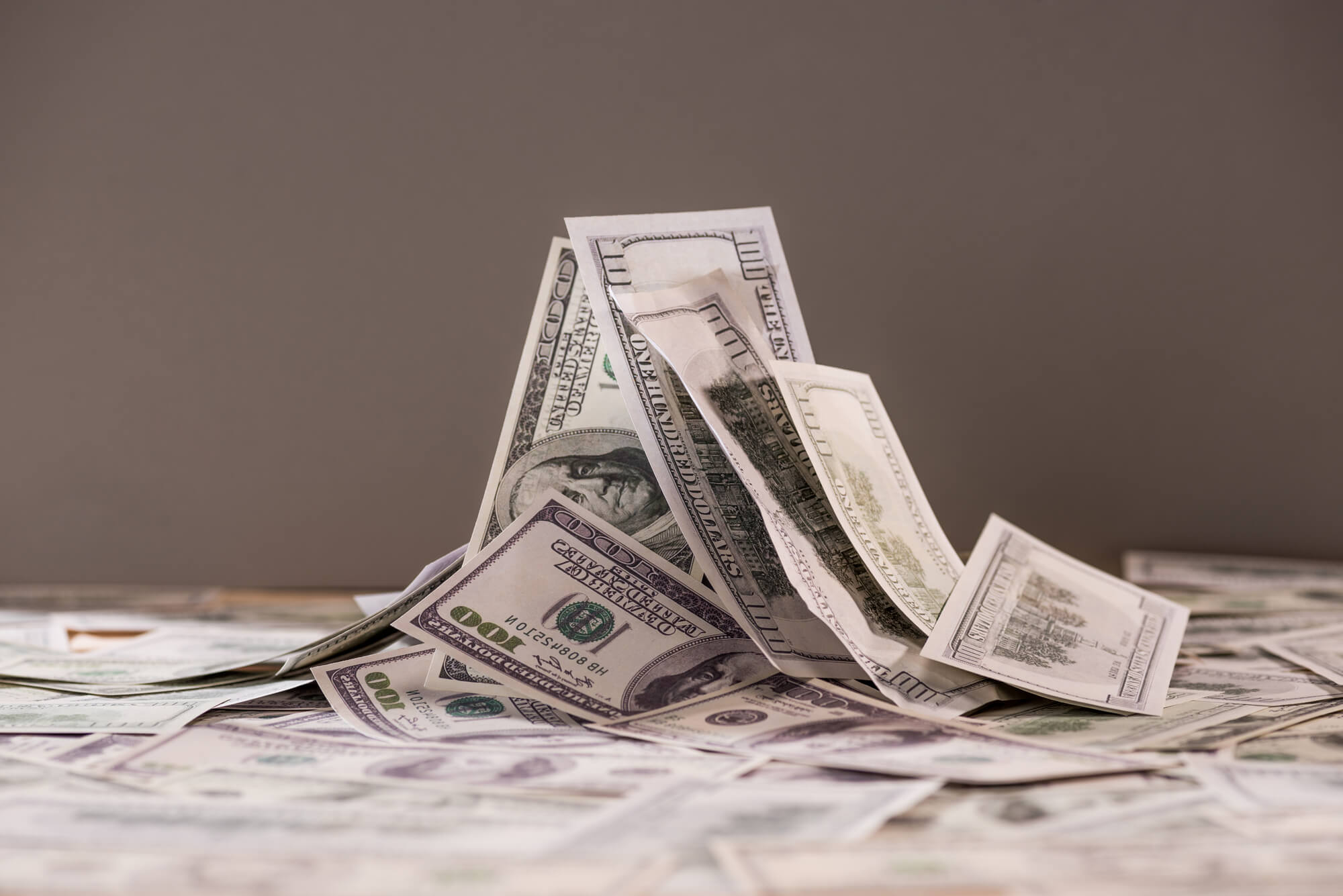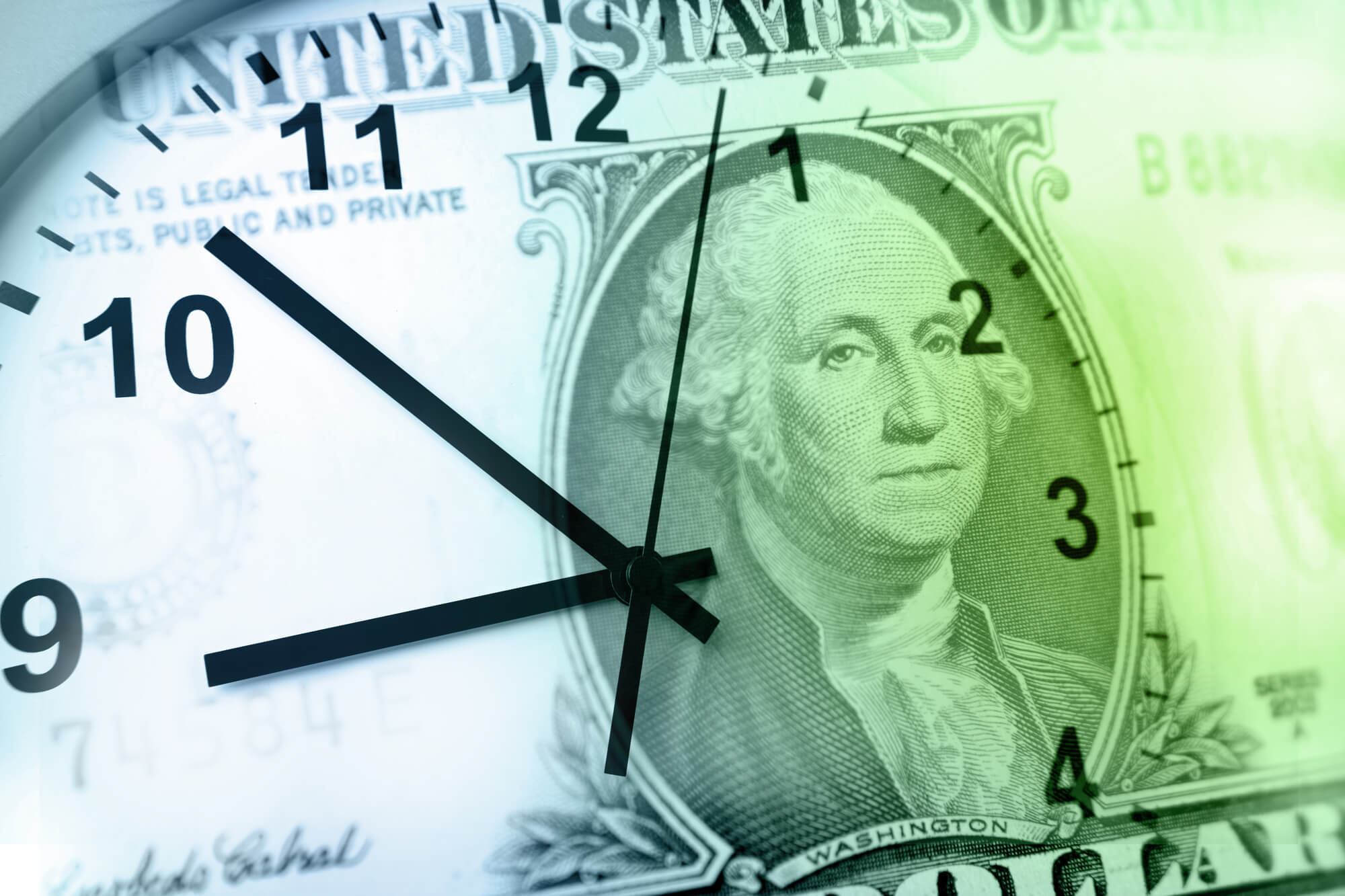Choosing to embark on a no-spend year can seem daunting or even unthinkable. But with a few tricks up your sleeve, you’ll be well on your way to successfully completing a no-spend year.
1. Have a why behind your no-spend year.
It’s hard to get anywhere in life without having a goal or vision, and a no-spend year is no exception. In fact, without clear directional cues such as physical objects or the sun, humans will even walk in circles! Establishing a why behind your no-spend year is the first step towards triumph.
Perhaps your why is paying off a large debt, such as a home, credit card bill, or student loan. Your why could also be investing a certain dollar amount into retirement or brokerage accounts. Another reason for embarking on a no-spend year could be to save for a major expense in your life, such as a new baby, new home, new car, or time away from work, such as a mini retirement. Alternatively, you might be motivated by decluttering and living a more minimalistic life or seeing just how much unnecessary spending you can eliminate. Whatever your why is, take time to specify exactly what is driving you to stop stop spending for 365 days, and then write it in a place where you’ll see it and refer to it regularly. Having explicit intention behind your no-spend year will keep you inspired to reach your goal of achieving a no-spend year.
2. Define your own no-spend rules.
A no-spend year means different things to different people. After defining your why, take the time to determine your no-spend rules. Here are a few questions to consider to help you shape your no-spend playbook, with rules you’ll actually follow.
- What will you spend money on?
- Most people still purchase necessities during a no-spend year and only eliminate wants. Will you spend money to invest in retirement or brokerage accounts? Will you spend money on experiences, while limiting spending on things? Will you spend money to build an emergency fund, or just use an existing emergency fund if something happens? Answering this question can be done in tandem with the next to better understand what to spend money on.
- What do classify as a need versus a want?
- Needs and wants can be as unique as the why behind not spending in the first place. For some people, a gym membership might be a want, and for others, it might be a need! Set clear delineations about purchasing food, everyday household goods, medical items, transportation, clothing, housing, and other consumables. Make sure to cover the nuances of each category, such as outlining if it’s okay to go out to eat versus buying food from a bulk store to eat at home. Also consider defining rules around inventory limits (will you only buy something if it’s empty/gone/broken? Or are you okay buying a few back-ups?).
- What existing budgeting or spending rules will you follow?
- Certain spending rules can be adopted to help make smarter, fewer purchases. Common spending rules include the 30-day rule (or not buying something until you’ve considered it for 30 days), the 24-hour rule (or not buying something until you’ve considered it for 24 hours), or the in-and-out rule (for every item you buy, a current possession needs to be donated or sold).
Using these questions and your own brain power, you can develop a solid no-spend playbook to help you avoid gray-area situations where spending could have been avoided if you’d established clear rules for yourself.
3. Find an accountability partner for your no-spend year.
After establishing a why and your own no-spend rules, find somebody to cheer you on. This could be a partner, friend, roommate, colleague at work, family member, or neighbor. Choose someone who will take you seriously and won’t compromise your chances at achieving your no-spend year.
Another way to find an accountability partner is to join online no-spend groups. In addition to giving you the opportunity to connect with others experiencing a similar journey, online no-spend groups can also provide you with money saving ideas or other resources.
After choosing someone to be your accountability partner, find ways to thank them and everyone else supporting you for free. If you are over for dinner at a friend’s house, ask to do the dishes at the end of the evening. Offer to watch their dog or babysit for them for free. Use your time as payment for their assistance.
4. Focus on small goals that create a no-spend year.
Mountains are climbed one switch back at a time, and the same is true for a successful no-spend year. Instead of being overwhelmed at the prospect of not spending for 365 days, start by tackling it a day, week, or month at a time.
This technique is especially helpful when combined with rules you established in the second step. If you’ve chosen to follow the 24-hour rule (requiring a 24-hour contemplation time period before purchasing something), for example, you can capitalize on delaying a purchase for one day and – boom – you’ve successfully gone a whole day without spending. The same is true for the 30-day rule. Instead of thinking to yourself, “I can’t spend money for this entire month”, think about what you want to spend money on and why, and think about that experience or object consistently for the next 30 days. Evaluate the value it will add to your life, and if there are any cheaper (or free!) alternatives. Use your no-spend playbook to strategically stack no-spend days, weeks, and months to become a year.
5. Track your savings consistently and find a way to visualize the amount saved.
One of the reasons it’s hard not to spend money is because shopping provides instant gratification. If you’re hungry, you might pick up your favorite take out because it’s quick and easy, even if you have plenty of food at home. Spending money can produce a band-aid like affect over a problem you’re experiencing in your life.
To combat this, find ways to provide yourself instant gratification without the associate spending. One way to do this is to consistently track your savings. If you didn’t spend money today on your usual lunch, add that total to a spreadsheet or budgeting app. Continue to do that throughout the month, and at the end of the month, pause to celebrate just how much you’ve saved from packing a lunch instead of eating out. Let’s say you typically spend around $12 for lunch 5 days a week. If you eliminated spending on lunch for a month, you’d have saved $240! And if you multiple that number by 12, you’d have $2,880 saved after a year, just by practicing your no-spend year on your daily lunch.
In addition to finding time and space to track how much you’re saving, it’s important to create ways to visualize those savings to generate more immediate gratification. Think about plugging your savings into a chart, or use a budgeting or savings app that will do so automatically for you. Print out how much money you’re saving and place it where you’ll regularly see it. Alternatively, set a reminder on your phone to check your spreadsheet or app graphs at the same time each day.
Another easy way to conceptualize just how much you’re saving is to associate dollar amounts with what you could buy for that amount. For example, if you’re planning to save $2,000 a month thanks to a no-spend year, find items of interest to you that would cost $2,000. Maybe it’s a brand new wardrobe, a vacation, a new computer, a mortgage payment, new sporting gear, or even somewhere around 5,000 hot dogs… Then, as you successfully save your daily, weekly, or monthly goal, put up a picture of what you could buy with the money you’ve now saved (except the hot dogs, maybe… because you’d run out of space), even if you don’t play to actually purchase it. Enjoy your success and the opportunities you’ve created for yourself, rather than focusing on how many days you still have left in your no-spend year.
Using innovative methods to steadily track your savings and visualize them can help you find more satisfaction in a no-spend year.
6. Set aside part of your no-spend savings in an emergency fund.
Even though you might have planned out your no-spend year to a T, you’ll probably experience a few curve balls during those 365 days. Maybe you lose your job and need to live off of savings for a while. Maybe your aunt, who lives in another state or country, dies and you need to pay for a plane ticket for the funeral. Maybe your roommate moves out and you suddenly need to cover the full rent amount. Regardless of the circumstance, setting aside part of your no-spend savings into an emergency fund will allow you to be prepared and to avoid the psychological feeling of “spending” on something you didn’t plan to. Because the money is already there and already accounting for the unaccountable, it will be less painful to spend on the necessary costs. You can also consider using your no-spend savings as a catalyst for bigger savings goals, such as financial independence.
7. Find alternative methods to meet your needs without spending.
Successfully completing a no-spend year is all about transforming your mindset on money and needs. Consider the following ways to live life without spending money.
- Learn to fix first and replace second.
- If you’ve worn through the soles of your favorite shoes, find a local cobbler who can help you resole them for cheaper than buying a new pair. If your dining room chair leg breaks, head to YouTube for some DIY fixing and only pay for any repair pieces rather than a new chair.
- Focus on borrowing or renting instead of buying.
- If you find yourself in need of a particular item of clothing for an unexpected event, ask around to see who might have something you can borrow. If you need to specific book for school or work, borrow a hard copy or audiobook from the library.
- Search for discounted means of meeting your needs.
- There are many clever approaches to save money while still meeting your needs. Think about shopping your own pantry (or only make recipes with items you already have, and don’t buy anything new until you’re out of stock), participating in clothing swaps or buying from secondhand stores (or yard sales), or taking advantage of any discounts on transportation or other benefits through work or school.
Use resources available to your to curb spending on needs and escalate your saving during a no-spend year.
8. Discover new ways to spend your time without spending money.
We can so often be hardwired to think of leisure time as a chance to spend money. But it doesn’t have to be that way! Whether you’re participating in a no-spend year or not, using your time wisely without spending money is a useful skill to have. You can spend your time without spending money by enjoying nature, finding free events, developing a hobby, building relationships with others, and exploring your very own neighborhood. Check out this article for examples of what these suggestions might look like in practice.
Finding purpose during your no-spend year can be a critical factor to whether or not you’re enjoying or dreading every day. You don’t need to – and shouldn’t – derive your value from your possessions. Discover meaning in your life by another free activity: serving others during your no-spend year. Just because you’re limiting your monetary output doesn’t mean you’re limiting your merit!
9. Take any additional steps to avoid spending temptation.
It’s easier to avoid bad habits when you’re in a controlled environment, so take action to create that environment for your no-spend year. Unsubscribe from emails from brands you won’t be purchasing for anymore. Unfollow social media accounts that produce content for whatever you’re eliminating from your life (such as restaurants or travel). If there are people in your life whom you find yourself spending money with when you’re together, be upfront about your no-spend plans to avoid awkward surprises or situations you can’t resist. Preparation is key to your no-spend victory!
Conclusion
Though sometimes it feels like you’re not sure you can go a day without spending, let alone a year, you can use these 9 steps as a guide to craft your own no-spend journey. If you find yourself slipping up, learn to exercise self-compassion, because no one is perfect; what matters is where you’re headed.
Climb on, FinBase.
B









